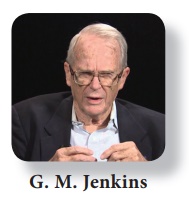Time Series and Forecasting - Introduction | 12th Statistics : Chapter 7 : Time Series and Forecasting
Chapter: 12th Statistics : Chapter 7 : Time Series and Forecasting
Introduction
TIME SERIES AND FORECASTING
G. E. P. Box (1919-2013) was a Britsh Statistician was “one of the great
statistical minds” of the 20th century, who received his Ph.D., from the
University of London, under the supervision of E. S. Pearson. He served as
President of Americal Statistical Association in 1978 and of the Institute of
Mathematics in 1979. His name is associated with Box-Cox transformation in
addition to Box-Jenkins models in time series.

M. Jenkins (1932-1982) was a British Statistician, earned his Ph.D.
degree from University College,
London under the supervision of F. N. David and N. L.
Johnson. He served on the Research Section Committee and Council of Royal
Statistical Society in 1960’s. He was elected to the Institute of Mathematical
Statitics

Both Box and Jenkins contributed to Auto regressive moving
average models popularly known as Box-Jenkins Models.
LEARNING OBJECTIVES
The students will be able to
·
understand the concept of time series
·
know the upward and downward trends
·
calculate the trend values using semi - average and moving average
methods
·
estimate the trend values using method of least squares
·
compute seasonal indices
·
understand cyclical and irregular variations
·
understand the forecasting concept
Introduction
In modern times we see data all around. The urge to evaluate the
past and to peep into the future has made the need for forecasting. There are
many factors which change with the passage of time. Sometimes sets of
observations which vary with the passage of time and whose measurements made at
equidistant points may be regarded as time series data. Statistical data which
are collected, observed or recorded at successive intervals of time constitute
time series data. In the study of time series, comparison of the past and the
present data is made. It also compares two or more series at a time. The
purpose of time series is to measure chronological variations in the observed
data.
In an ever changing business and economic environment, it is
necessary to have an idea about the probable future course of events. Analysis
of relevant time series helps to achieve this, especially by facilitating
future business forecasts. Such forecasts may serve as crucial inputs in
deciding competitive strategies and planning growth initiatives.
Related Topics